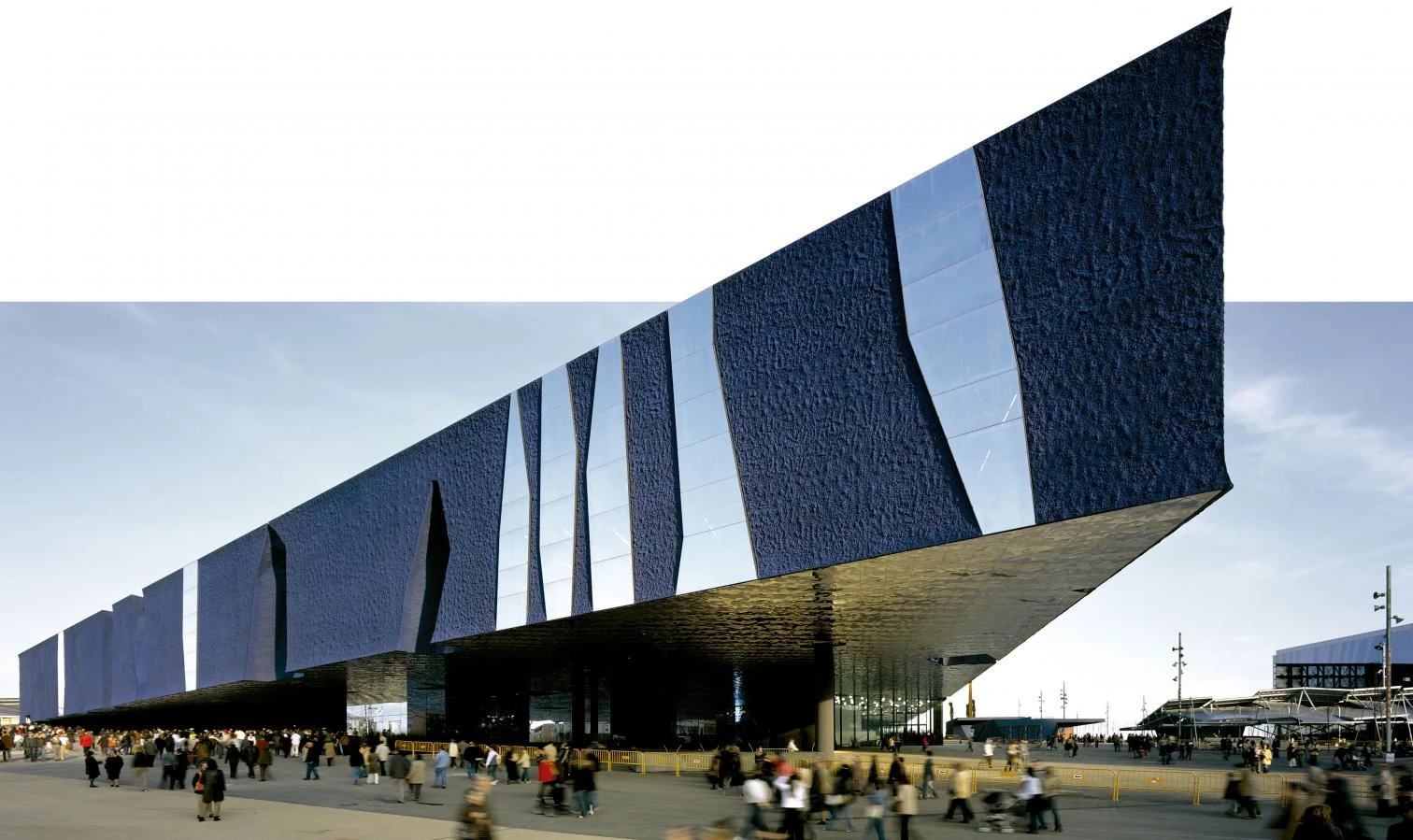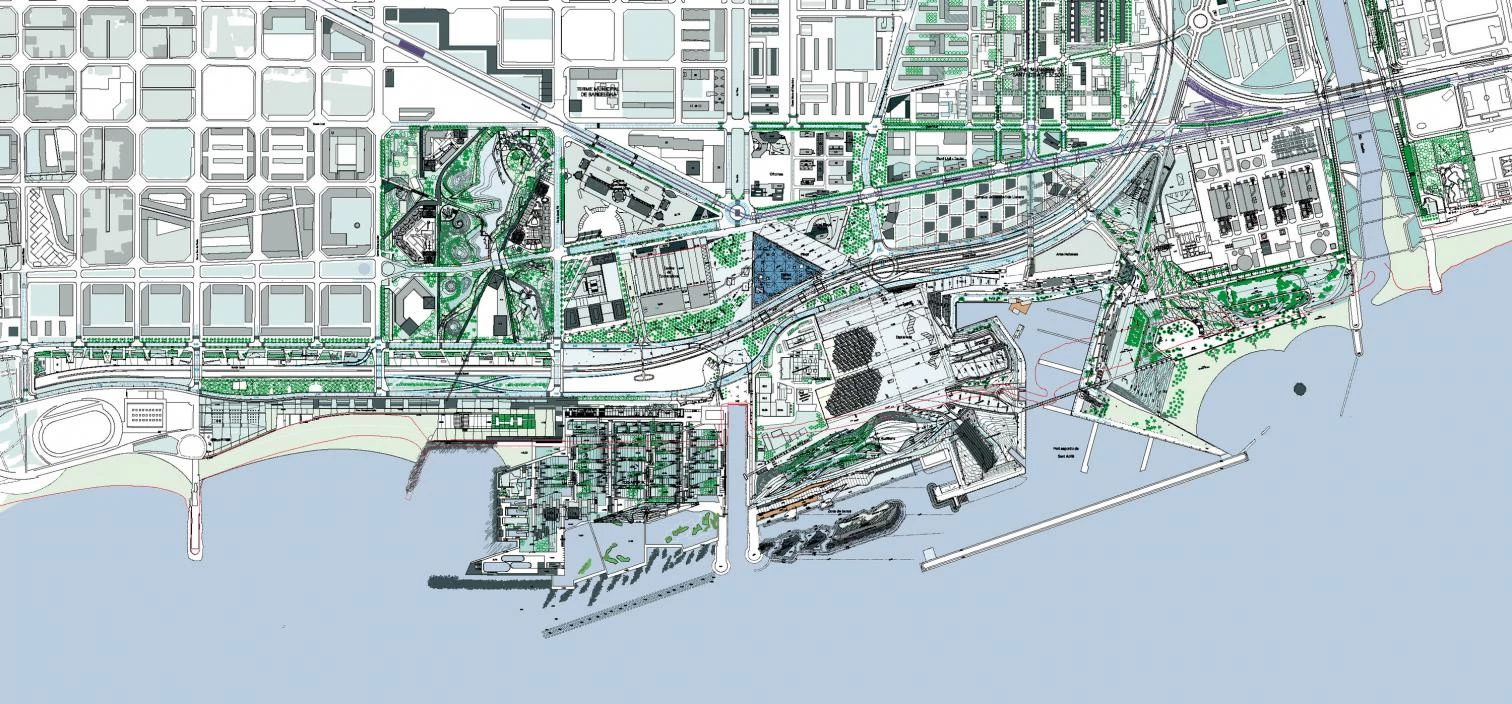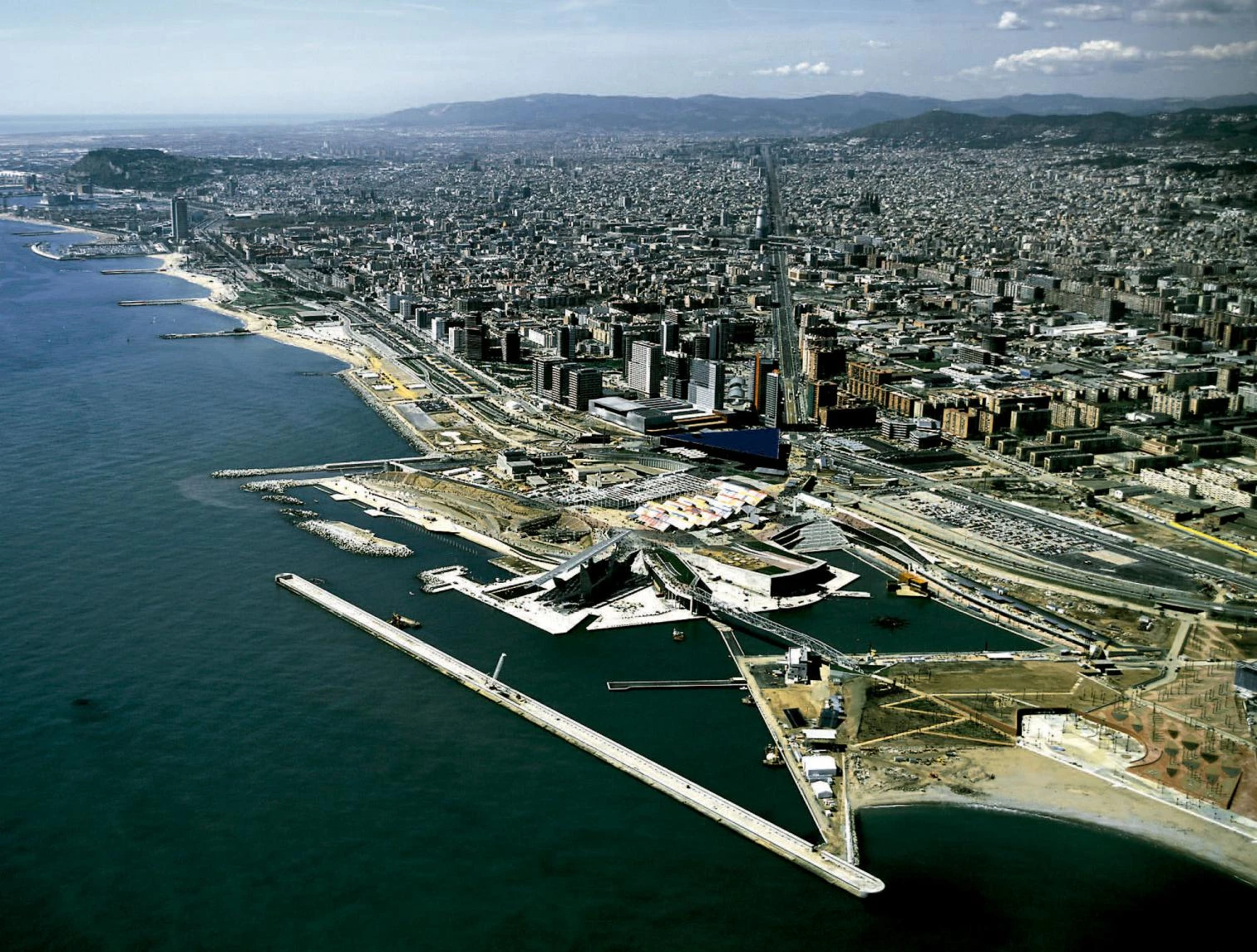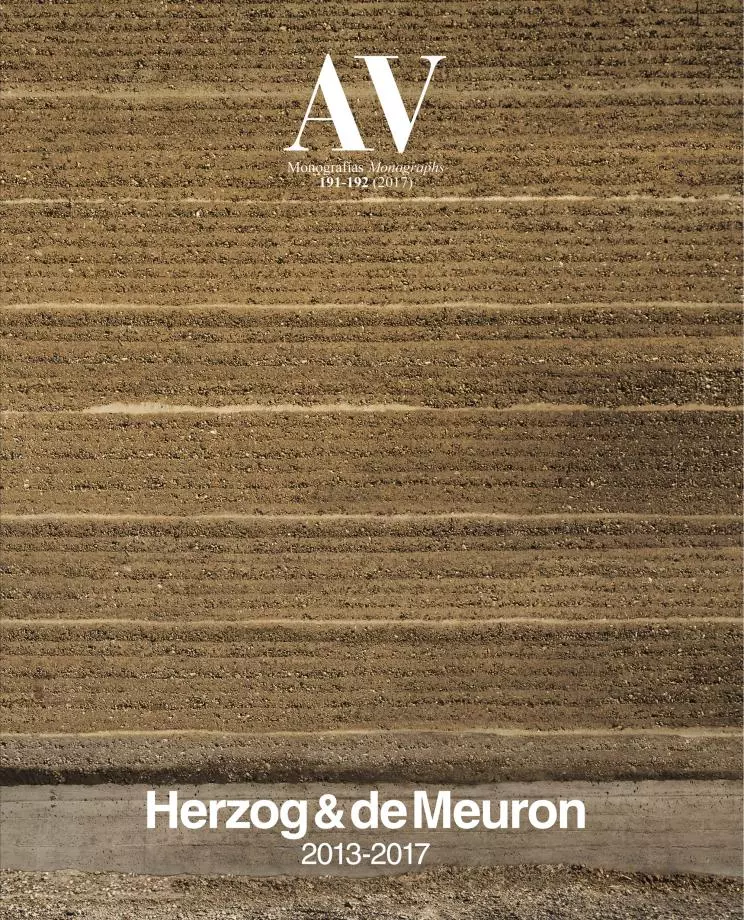Virtuous Triangles
The Barcelona Forum has used the international cultural event as the engine of the urban renewal of a vast coastal zone around the site of the exhibition.


Barcelona is the inventor of the virtuous triangle: the event generates urban development, this in turn boosts economic growth, and prosperity induces the organization of new events. That grand events leave urban fruits is common knowledge. Universal Expositions and Olympic Games have done so, in general, and the Catalan capital experienced such a push also with the Expositions of 1888 and 1929. But ordinarily the effort leaves a city exhausted, and it takes a while for it to recover the social and financial energy that the urbanization process requires. In Barcelona, however, the idea of the Forum was launched by 1996, just four years after its own Olympic Games, and the project has been carried out to full term in only eight thereafter, wrapping up a new cycle of that virtuous triangle with vertexes in the city, commerce, and culture.
The site of the Forum lies between the Olympic Villa and the city limits of Barcelona, in the area where Diagonal Avenue meets the sea, and it is the core of an extensive urban remodeling of this section of the seafront.


With a total investment of 3,200 million euros, expended in equal shares by the public and private sectors, the operation – promoted by Mayors Pasqual Maragall and Joan Clos and executed by architect José Antonio Acebillo – covers over 200 hectares in the zone where the Diagonal meets the sea, between the Olympic Village and the mouth of the river Besós, spectacularly regenerating a peripheral area characterized by large metropolitan infrastructures, namely a sewage treatment plant, a power station, and an incinerator, which have been maintained in place but refurbished to serve the new residential, commercial, and recreational uses of the area. The actual Forum precinct takes up only 30 hectares of the total ground area worked on, and only a tenth of the overall budget is attributable to the activities to be held on the premises for 141 days. It therefore seems reasonable to understand the event, above all, as the alibi and the catalyst of a colossal urban transformation.
In contrast to the urban model of the Olympic Village, based on the city block and street, the protagonists here are the tower and the garden. Besides parks and the horizontal features of the Forum, the new Barcelona is built of high-rise apartments, hotels, and offices. The result is a disperse, vertical landscape. A bit in the American manner of using the recreational void, whether a golf course or an amusement park, as a hub around which to agglutinate residential and commercial developments, the plaza and the port of the Forum are the hollow heart of a real estate operation. For their part, the activities that begin tomorrow facilitate the referent that has made it possible to ‘thematize’ the investments and mobilize the political and popular will. There seems to be a great ideological distance between the Anglo-Saxon pragmatism of privatized or negotiated urbanism on one hand, and the beatific aims of a Forum of beautiful souls inlaid with good intentions on the other, but no smaller is the gap between the carefree jubilation of signature pergolas or designer parks and the silent utilitarian efficiency of the sewage treatment plant on top of which they are all built, in a rare superposition that is surely the most visionary feature of this whole empirical endeavor.


Emblem of the event and threshold to the premises, a work of the Swiss partnership of Herzog & de Meuron, the Forum building is a horizontal triangle that very naturally marks the meeting of urban fabrics while weightlessly floating on a slanting platform that gives access to a 3,200-seater auditorium incrusted inside it and an expressionist exhibitions gallery fitted into the projecting volume. With a pool-roof whose sheet of water spills into the skylight-courtyards perforating it, a rough skin of projected concrete (the Klein blue of which has already been dubbed Miró blue) torn by crystalline cracks, and a soffit of reflecting metal that gives levity to the suspended mass, this illusionist piece blurs the lines between plaza and building, confusing water with floor and glass with sky in a work combining typological innovation with visual seduction, such archaic magic in indigo sure to stick to the popular retina. In front of the Forum building, connected to it by an underground promenade stitched by scenographic patios, rises the Convention Center diligently designed by Josep Lluís Mateo. With a capacity for 15,000, it is arranged in three parallel bands: an area for meetings and services whose undulating metal facade tries to alleviate the impact of the massive volume, and whose lobby is dominated by a 2,000 square meter braided aerial sculpture by Cristina Iglesias; the huge hangar of the convention hall where the large architectural models executed for the exhibition Cities-Corners, curated by Manuel de Solà-Morales, are currently on display; and two prismatic towers built to contain offices and a hotel.
The Forum building by Herzog & de Meuron and the photovoltaic pergola by Torres & M. Lapeña are the most significant landmarks of the grounds that during the summer held exhibits, encounters and performances.
Besides these two buildings, a big esplanade that partly covers the sewage treatment plant, over which the kiosks and pavilions serving the ephemeral activities rise, is designed with sober expressivity by Torres & Martínez Lapeña, all the way from the topographically triangulated and festively polychromatic pavement to the staircases, lookouts and shelters, not to mention the sculptural inclined tray of the photovoltaic pergola that marks the seaside edge of the premises, rhetorically monumentalizing solar energy as the symbol of the ecological consciousness that impregnates the whole Forum idea. The marina, venue-to-be of the complex’s food court, and the ancillary constructions featuring shops, harbor offices, and gangplanks are projects of the Catalan teams of Casas & Torres, Baena, Casamor & Quera, and Ferré & Domingo. The bathing zone was designed by Beth Galí as pools of seawater punctuated by laconic concrete posts, reached by descending some tiers, and protected from the swell of the Mediterranean by a small artificial island. The park of the Auditoriums is conceived by Alejandro Zaera as a melancholic warped landscape of dunes, paved with half-moon pieces, that connects the esplanade to the bathing area while shaping two grandstands for open-air spectacles. Finally the park of Peace, executed by Ábalos & Herreros between the port and the new beach, at the foot of the existing power plant, the formidable visual impact of which is softened by the friendly pop imagery of a horizontal mosaic of Mediterranean fish.
Past the Forum’s actual perimeter albeit simultaneously promoted and part of the same operation are works like the Hotel Princess, a slender skyscraper with a pointed triangle for a floor plan that Oscar Tusquets has built on Diagonal 1, across the suspended triangle of Herzog & de Meuron. Another is the elegantly faceted volume of the geriatric center designed by Clotet & Paricio, carried out to the end with the constructive rigor of the residential skyscraper nearby. Then there is the cluster of towers of the Diagonal-Mar complex, executed by the American developer Hines with architects of diverse leanings within the framework of a rare urban park designed by the late Enric Miralles. And this is complemented by a commercial center, banal as expected, signed by the New York office of Robert Stern. Walking the paths of Miralles’ extraordinary park, one comes upon a wealth of features, from the gabions of wire and rock of the retaining walls to the ponds adorned with water plants, or the sculptures of metal tube to the large earthenware jars and the warped benches, and what inevitably comes to mind is how much his topographical and lyrical imagination lives on in the fluid movement of the Forum landscape, the early proposals for which he helped define. One also ponders how much of the vertiginous mix of urban pragmatism and capricious design that characterizes the premises is a fruit of a sentimental logic, so Catalan, that intertwines the everyday with the surreal.


Structured by three axes that form another virtuous triangle, namely peace, diversity, and sustainability, the Forum’s activities present themselves as a well-meaning mix of the Davos and Porto Alegre forums, but are more like the permanent party of a Disneyland of NGOs. “All people of good faith are in the Forum,” says Mayor Clos, and such good-thinking unanimity (expressed in montages of light and sound that tell of the deterioration of coexistence amid conflict, and the defeat of the latter through dialogue) is a bit overwhelming. Even if we concede that it is the state’s job to tame or educate the masses through spectacles, such a concentration of acrobats, puppets, circuses, cabarets, carnivals, and street players at the service of universal virtue seems to indicate an excess of magical thought and ethnic mimicry, stuffing civic goodness with a disproportionate proliferation of open hands, totems and talismans, in line with the stands of the central marquee that offer henna tattooing and lessons on how to light a fire.
Francis Bacon called the ambiguous representations produced by our interactions in the plaza or forum “idols of the forum,” and there are reasons to believe that Barcelona’s Forum is full of these deceitful idola fori, abbreviated here in a mythical confidence that good intentions suffice to face an increasingly Hobbesian world. But while the Leviathan does not appear in the horizon, surely we can indulge in this cartoon ideology that political elites use as narcotic or as comfort. After all, the tripartite government now sharing the Plaza de Sant Jaume seems to believe in its Trinitarian virtue, and venial reticences cannot spoil the virtuous fiesta that started on 9 May and closed with fireworks on 26 September. Congratulations, Barcelona.
[+][+][+][+]







